The debt-limit deal could help clean energy. But probably not much
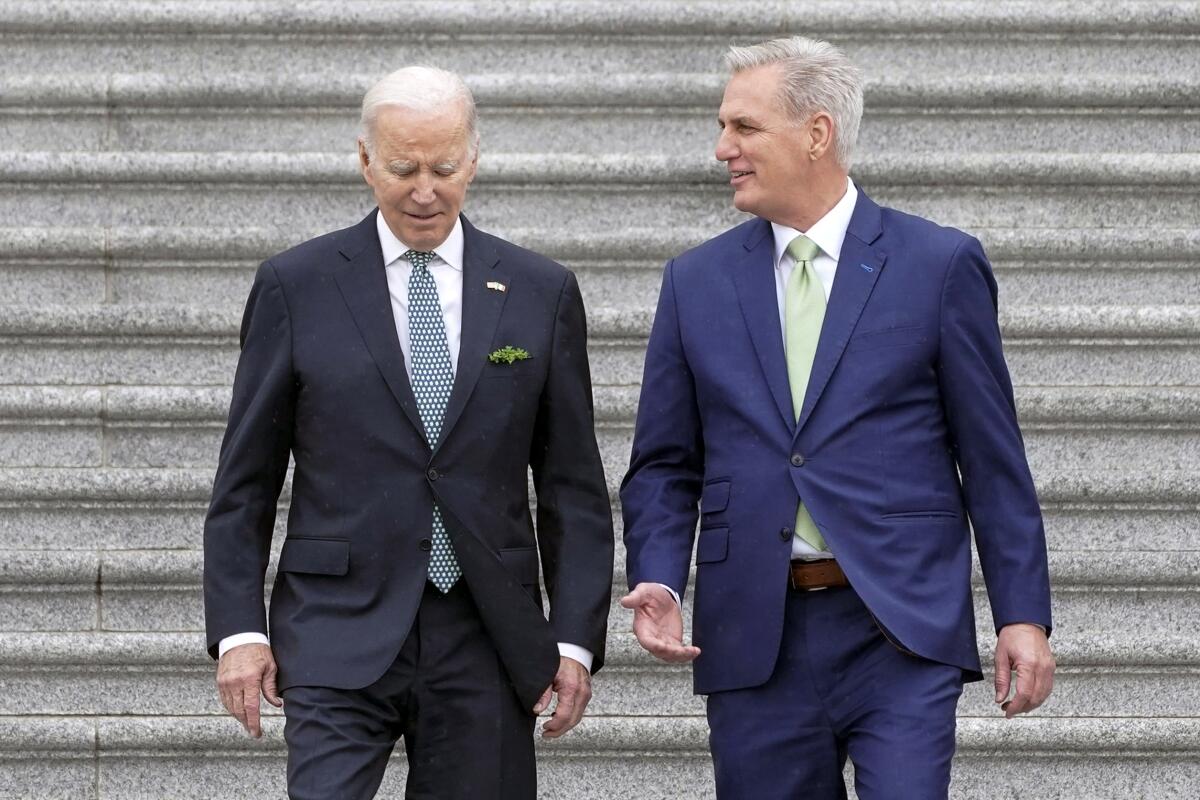
- Share via
This story originally published in Boiling Point, a newsletter about climate change and the environment. Sign up here to get it in your inbox.
The battle playing out in Congress over America’s debt limit could have significant consequences for that other crisis — the one having to do with fossil fuels, carbon pollution and rising temperatures.
As part of a deal struck by President Biden and House Speaker Kevin McCarthy to suspend the nation’s debt ceiling — and avoid an economically devastating default — federal officials would issue permits for the Mountain Valley Pipeline, which is designed to carry planet-warming natural gas from West Virginia. The pipeline would worsen the climate crisis. But it’s a top priority for West Virginia Sen. Joe Manchin III, a conservative Democrat without whom the party would lose control of the Senate.
The Biden-McCarthy deal — which was approved by the House of Representatives on Wednesday and is expected to pass the Senate — could also speed up climate-friendly energy projects, such as solar and wind farms.
The bill would set a two-year deadline for federal agencies reviewing energy projects to issue environmental reports, and set a page limit on those reports (150 pages, or 300 for “extraordinarily complex” projects). It would allow energy companies to hire a third-party consultant to write those reports, rather than having a slow-moving federal agency take responsibility.
Other changes would make battery-storage facilities eligible for quicker approval under the Obama-era FAST Act, and help federal agencies avoid duplicative environmental analyses of energy technologies that other agencies have already studied.
But it’s a double-edged sword. Most of those provisions could also be used to speed up permitting for fossil fuel infrastructure, such as pipelines, power plants and export terminals. Other provisions could limit the number of coal, oil and gas projects subject to federal scrutiny under the National Environmental Policy Act, conservationists say — and in the process harm the Black, Latino and low-income communities that have long suffered the injustice of fossil-fueled air and water pollution.
The National Environmental Policy Act “is one of the most powerful tools that environmental justice communities have on the books,” said Jean Su, a Washington, D.C.-based attorney with the nonprofit Center for Biological Diversity. “If we keep making these exemptions ... then we’re undercutting the whole point of the [law], which is to give voice to these environmental justice communities and the public to weigh in on how projects will affect them.”

Environmentalists have slammed the debt-ceiling deal, although some groups are tempering their critiques, grateful that Biden didn’t agree to Republican demands to roll back elements of the $369-billion climate law he signed last year. The deal passed the House with a mix of Democratic and Republican votes, even as some harder-core conservative lawmakers called for more aggressive federal spending cuts and some progressives decried the giveaways to the fossil fuel industry.
But the legislation won’t end the debate over permitting reform. Far from it.
Jason Grumet, chief executive of the American Clean Power Assn. — a trade group for renewable energy companies — called the debt-limit deal “an important down payment on much-needed reforms to improve the efficiency of the permitting process.”
But he made clear it’s not enough.
“Absent significant improvements in the siting and construction of new clean power transmission capabilities, our nation will fail to achieve critical economic, national security and climate goals,” Grumet said in a written statement.
Scientists say the United States must dramatically pick up the pace of building solar farms, wind turbines, batteries and electric power lines to have any hope of avoiding the worst consequences of global warming. Those consequences include deadlier heat waves, harsher droughts, more powerful storms, larger wildfires and more destructive coastal flooding.
But across the country, local opposition has made it increasingly difficult to build clean energy.
Conservationists, rural residents and Native American tribes are pushing back against projects they say would destroy wildlife habitat, spoil beautiful views and desecrate sacred sites. A report released Wednesday by Columbia Law School found that local governments across 35 states have implemented 228 ordinances blocking or restricting renewable energy facilities.
The report also counted 293 clean power projects in 45 states that have faced local opposition. Just this week, I read stories about rural San Diego County residents opposing a battery project they worry could spark wildfires, and a conservation group objecting to a Nevada electric line that would support renewable energy but cut through an area of protected ice-age fossils.
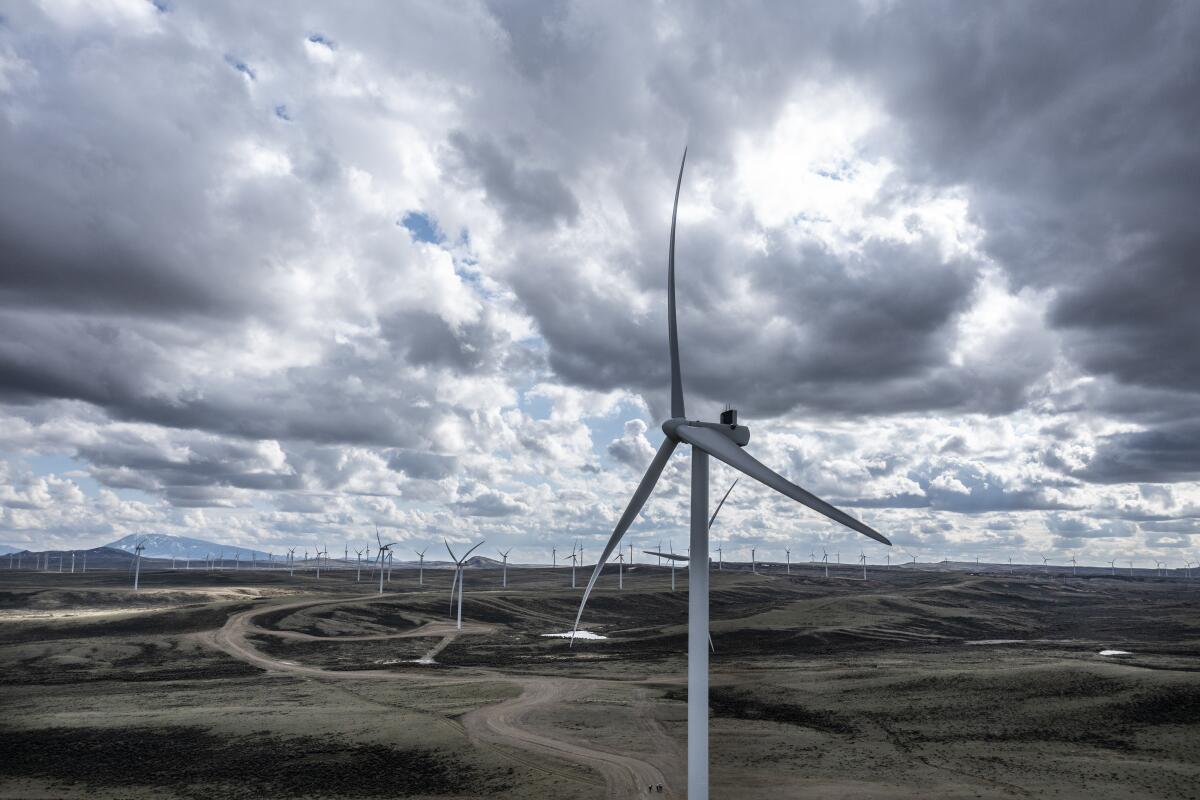
Michael Gerrard, founder of Columbia’s Sabin Center for Climate Change Law, sees those numbers as a powerful reminder of why the House and Senate must do more to help renewable energy projects overcome local opposition.
In an article last year, Gerrard suggested Congress could pass legislation allowing the federal government to approve solar and wind farms that might otherwise be rejected by local or state officials. He also suggested limiting the number of federal agencies involved in approving projects, and using eminent domain more often — especially for long-distance transmission lines.
Standardized measures to limit environmental damage from solar and wind farms would also be helpful, he wrote, “so that the wheel doesn’t have to be reinvented and renegotiated every time.” Congress could put time limits on court challenges too.
“We need to fire on all cylinders,” Gerrard told me.
California lawmakers passed a permitting-reform bill last summer that incorporated some of those ideas, at the urging of Gov. Gavin Newsom. The bill gave renewable energy companies the option to sidestep local governments — some of which have severely restricted solar and wind — and instead seek approval from a state agency. The bill required that agency to approve or deny projects within nine months, while giving state courts an additional nine months to resolve any lawsuits.
It’s hard to say how big a difference those changes have made, at least so far.
Just one company has filed an application with the state — Houston-based ConnectGen, which saw its proposed 48-turbine, 205-megawatt Fountain Wind project rejected by Shasta County. Two other firms planning battery projects — one in Orange County and the other in Alameda County — are preparing applications, a California Energy Commission spokesperson told me.
Gerrard has criticized factions within the environmental movement for opposing those types of reforms. In his article last year — titled “A Time for Triage” — he argued that conservation groups such as the Center for Biological Diversity have “tradeoff denial,” because they refuse to recognize “that it’s too late to preserve everything we consider precious.”
Had the U.S. and other nations heeded scientists’ calls to start cutting fossil fuel pollution in the 1980s, “we might not have been forced into these tough choices. But that didn’t happen; we squandered the time,” Gerrard wrote. “We have to acknowledge that we need to be in an era of triage, where we save what we can but recognize that there are things we’ll have to give up.”
It’s a provocative argument, and one that speaks to perhaps our biggest challenge in phasing out coal, oil and gas.
Solar and wind are some of the cheapest forms of electricity on the market. Batteries to keep the lights on after dark are coming down in cost, as are electric cars and home heat pumps. Researchers have found that mostly eliminating fossil fuels and running the nation on renewable energy is technologically feasible and would lead to enormous health benefits.
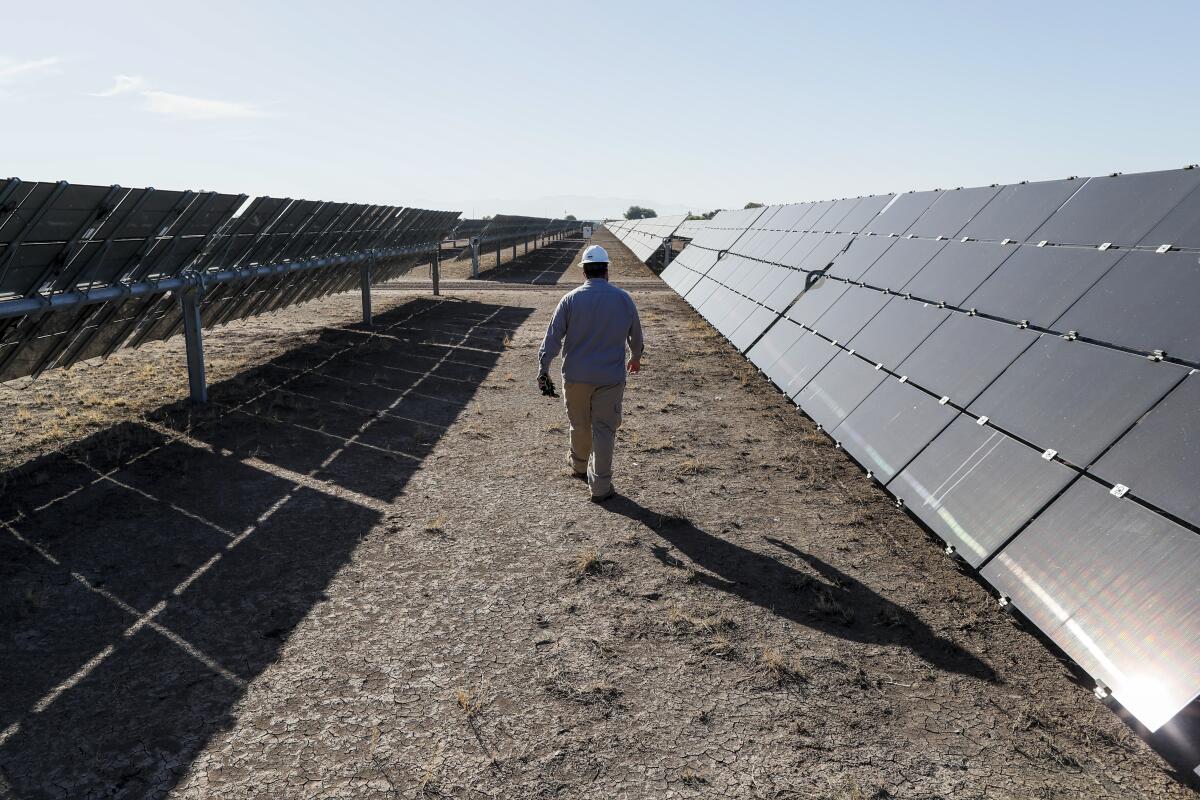
But that’s all predicated on building lots of clean energy projects, much faster than we’ve built them before. And as I’ve learned in my travels across the West, it’s nearly impossible to find a spot where someone won’t oppose whatever you want to build.
To be clear, many of the environmental and cultural concerns are legitimate. That’s what makes this so hard.
The Center for Biological Diversity has a strikingly different vision for permitting reform than the one espoused by the solar and wind industry. The center was one of several groups behind a policy brief released last month calling for “a just, renewable energy system that prioritizes energy conservation, distributed and responsibly-sited energy, and robust community engagement.”
What would that mean in practice? A few things:
- Directing more federal funding to home insulation and other steps to reduce energy use, especially in low-income homes
- Requiring stronger regulation of energy-intensive industries such as cryptocurrency mining
- Installing rooftop solar panels atop as many homes, parking lots and industrial buildings as possible
- Prioritizing larger-scale renewable energy facilities on highway corridors, irrigation canals, abandoned mines, landfills and other degraded areas, to limit the amount of undisturbed public land torn up by solar and wind farms
- Giving Indigenous tribes and other communities more opportunities to weigh in on energy projects in their backyards
- Making it harder for monopoly utility companies to obstruct rooftop solar and otherwise slow the energy transition
Underlying those proposals is the belief that America’s century-old energy system — in which big electric utilities supply power to captive customers — is fundamentally broken, with low-income people of color suffering the most.
High electric bills. Dirty power. Polluting projects built in communities without the political power to keep them away.
For groups such as the Center for Popular Democracy, the Indigenous Environmental Network and Greenpeace — co-authors of the aforementioned policy brief — the solution is to create a radically different system for powering society.
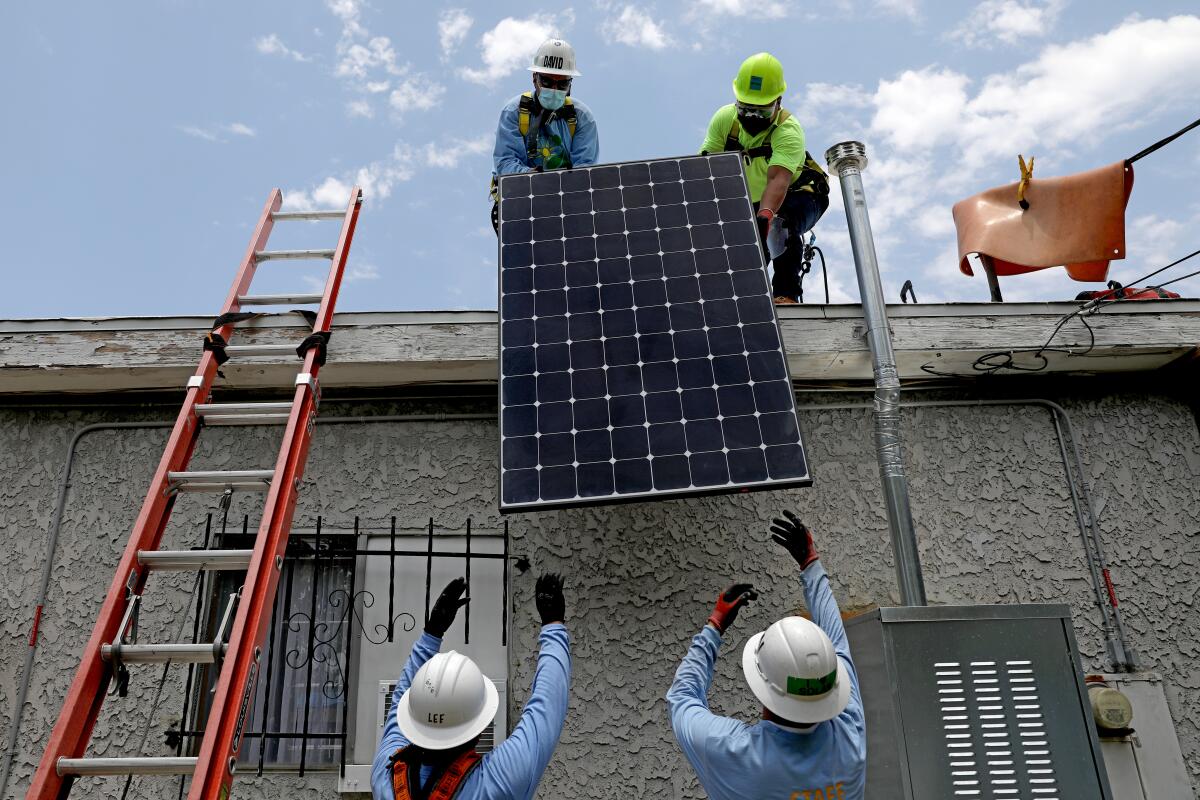
Instead of just replacing coal and gas plants with solar and wind farms, take control away from monopoly utilities and give it to the people. Encourage an “energy democracy” in which working families — especially those who have been burdened by fossil fuel emissions and high electric bills for far too long — can generate their own clean energy and keep the lights on during fires, storms and other extreme weather fueled by rising temperatures, without having to rely on profiteering power companies.
But is it really a good idea to make solving climate change contingent on refashioning the entire energy system? Isn’t transitioning from fossil fuels to renewables hard enough, without also needing to rework the electric utility model?
When I posed those questions to Su, who leads the Center for Biological Diversity’s energy justice program, she acknowledged the scale of the challenge. But even if it’s not possible to abandon traditional utilities entirely — or avoid the construction of all large solar and wind farms — she thinks it’s crucial to push for environmental justice alongside renewable energy.
“We are asking for something visionary,” she said. “I don’t think it’s right that moderates or Republicans attack us for vision.”
I also asked Su about Gerrard’s criticism of her group and other conservationists — that they’ve got “tradeoff denial” and could contribute to global warming spiraling out of control by opposing badly needed renewable energy projects.
She rejected the criticism, noting the Center for Biological Diversity has only sued over two renewable energy projects, both wind farms over a decade ago. She also suggested climate advocates need to find a way to stop fighting among themselves.
“These arguments and attacks among green to green are not helpful,” she said.
Helpful or not, they’re reality. Whether and how they’re resolved will help determine the course of our collective futures.
A FEW MORE THINGS
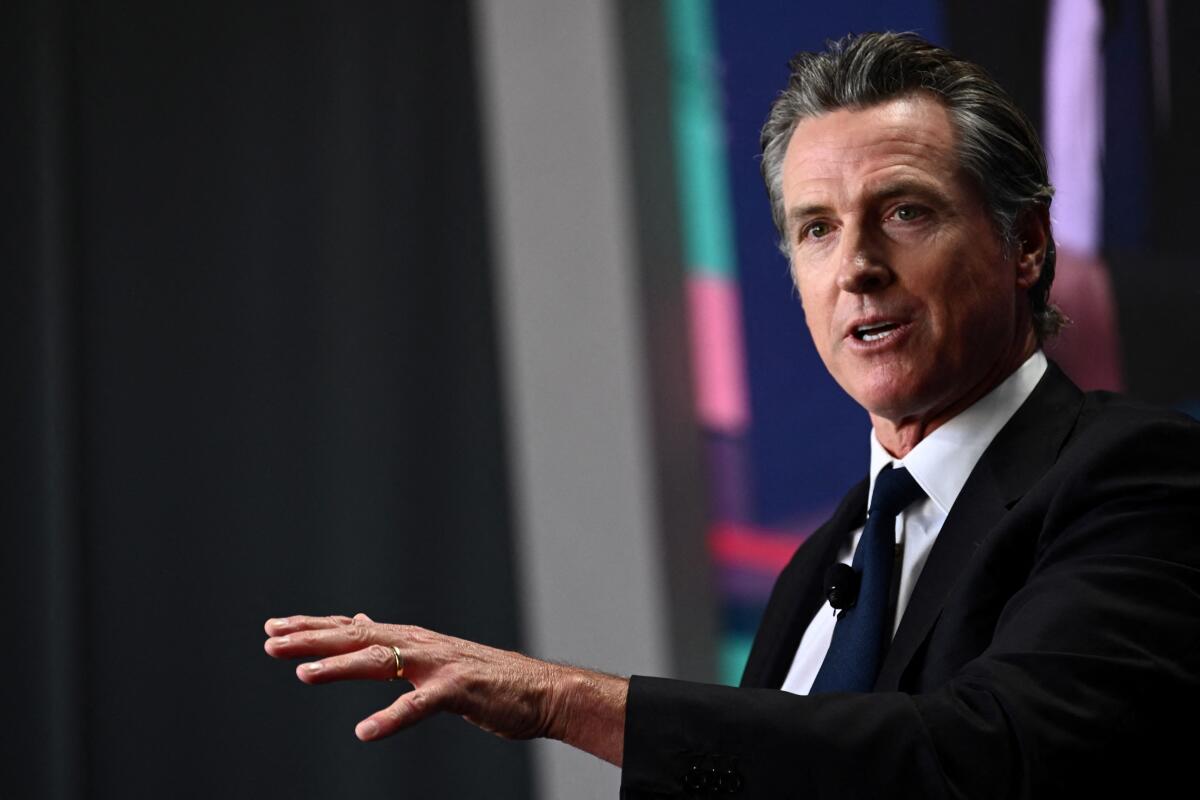
It’s not just Congress debating permitting reform.
Newsom released a plan last month to speed up clean energy, water and transportation projects in California by limiting how long lawsuits can last and streamlining approval processes. Details here from The Times’ Liam Dillon and Hannah Wiley.
Lawmakers declined to endorse the governor’s plan right away. But they could still circle back later this year.
Separately, the California Senate passed a bill designed to spur faster approval of transmission lines, advancing the legislation to the Assembly. State agencies, meanwhile, are working to hasten the approval of renewable energy projects in places where there will be sufficient power-line capacity to carry the energy to cities, per this story by Utility Dive’s Kavya Balaraman.
Building new power lines is one of the hardest parts of the energy transition, in part because the longest lines can stretch hundreds of miles and cross dozens of jurisdictions and hundreds of private properties. As Canary Media’s Jeff St. John reports, the Biden administration is working to speed up transmission approvals without steamrolling communities along the way.
“If we can’t build some new things in a few backyards, the climate crisis will destroy everyone’s backyards — along with the livelihoods, communities, wildlife and biodiversity we all want to protect,” said John Podesta, a senior advisor to Biden.
The more renewable energy can be shared across state lines through existing wires, the less need there will be for expensive and controversial new infrastructure — which is one reason Newsom recently threw his support behind a bill meant to spur increased power-sharing between California and other Western states. But the governor’s endorsement was too late to make a difference, coming shortly after the bill’s author said it didn’t have the votes to advance this year, per Politico’s Wes Venteicher.
To finish up where we started, the debt-limit deal could help spur new power lines — at least in theory. The bill would require a national study on the need for new transmission, which could help inform future efforts to authorize construction.
But experts say a lack of study isn’t the problem. It’s getting permission to build.
“Clearly the debt-limit language doesn’t accomplish much,” Gerrard said. “More congressional action is needed on that.”
We’ll be back in your inbox on Tuesday. To view this newsletter in your Web browser, click here. And for more climate and environment news, follow @Sammy_Roth on Twitter.
Toward a more sustainable California
Get Boiling Point, our newsletter exploring climate change, energy and the environment, and become part of the conversation — and the solution.
You may occasionally receive promotional content from the Los Angeles Times.




